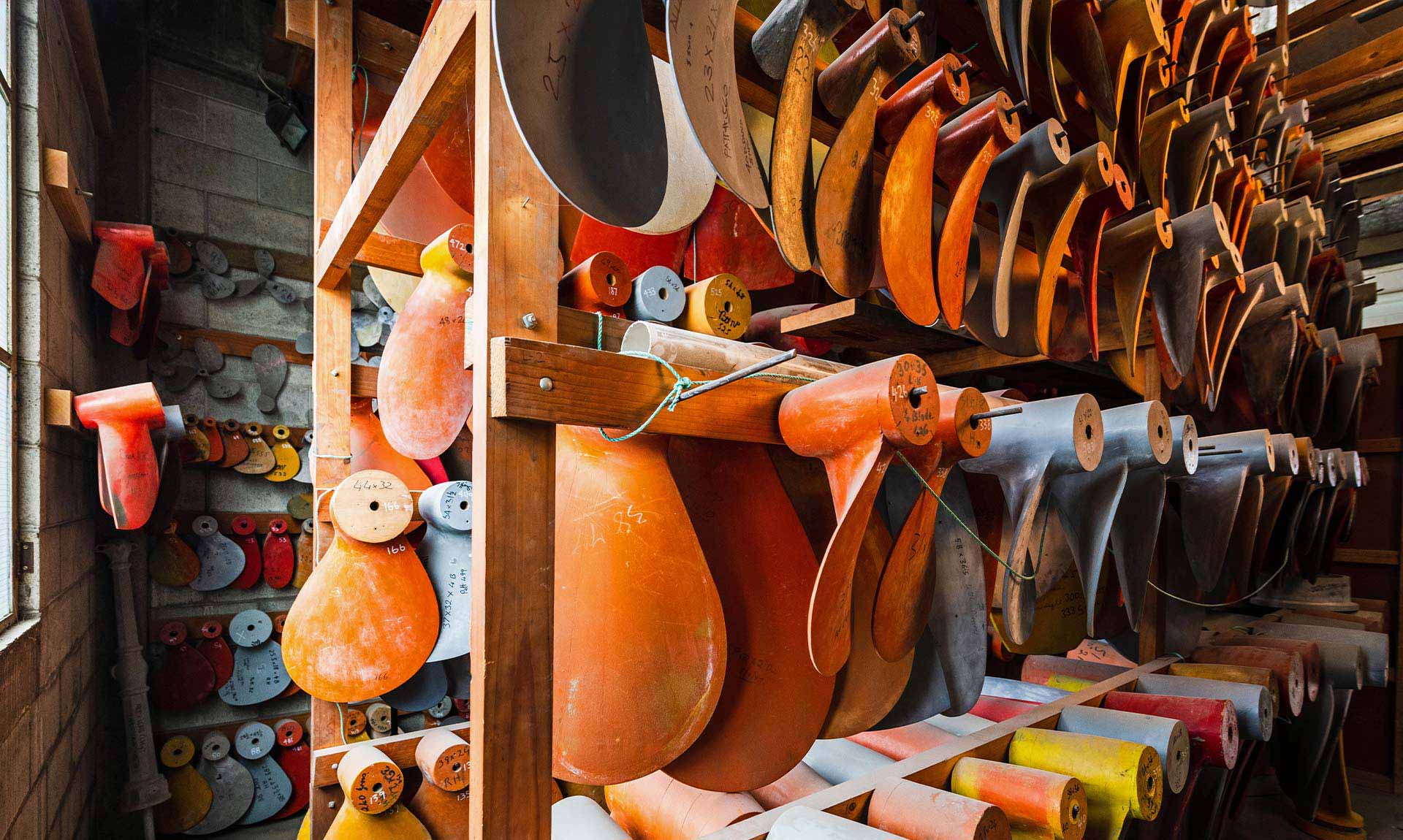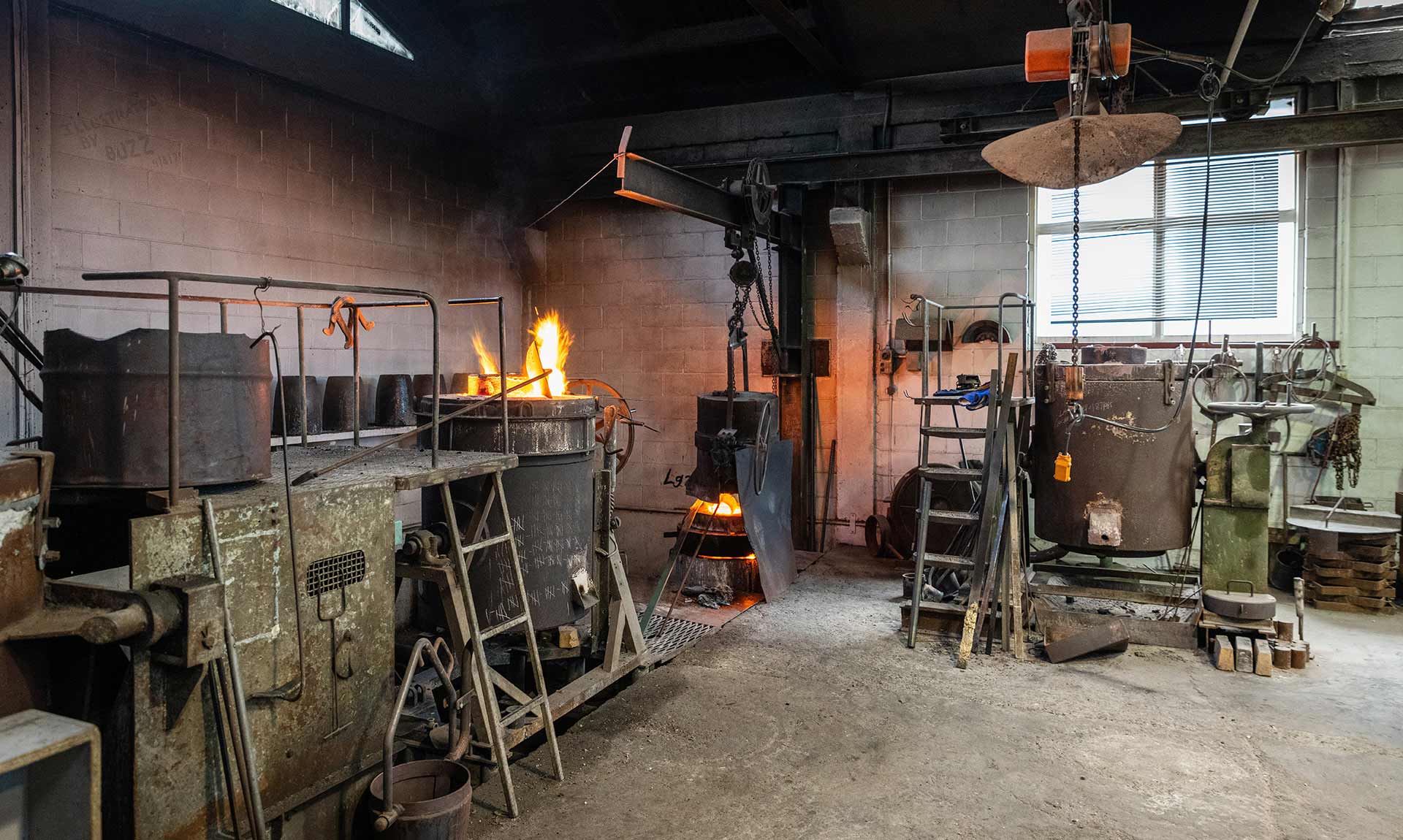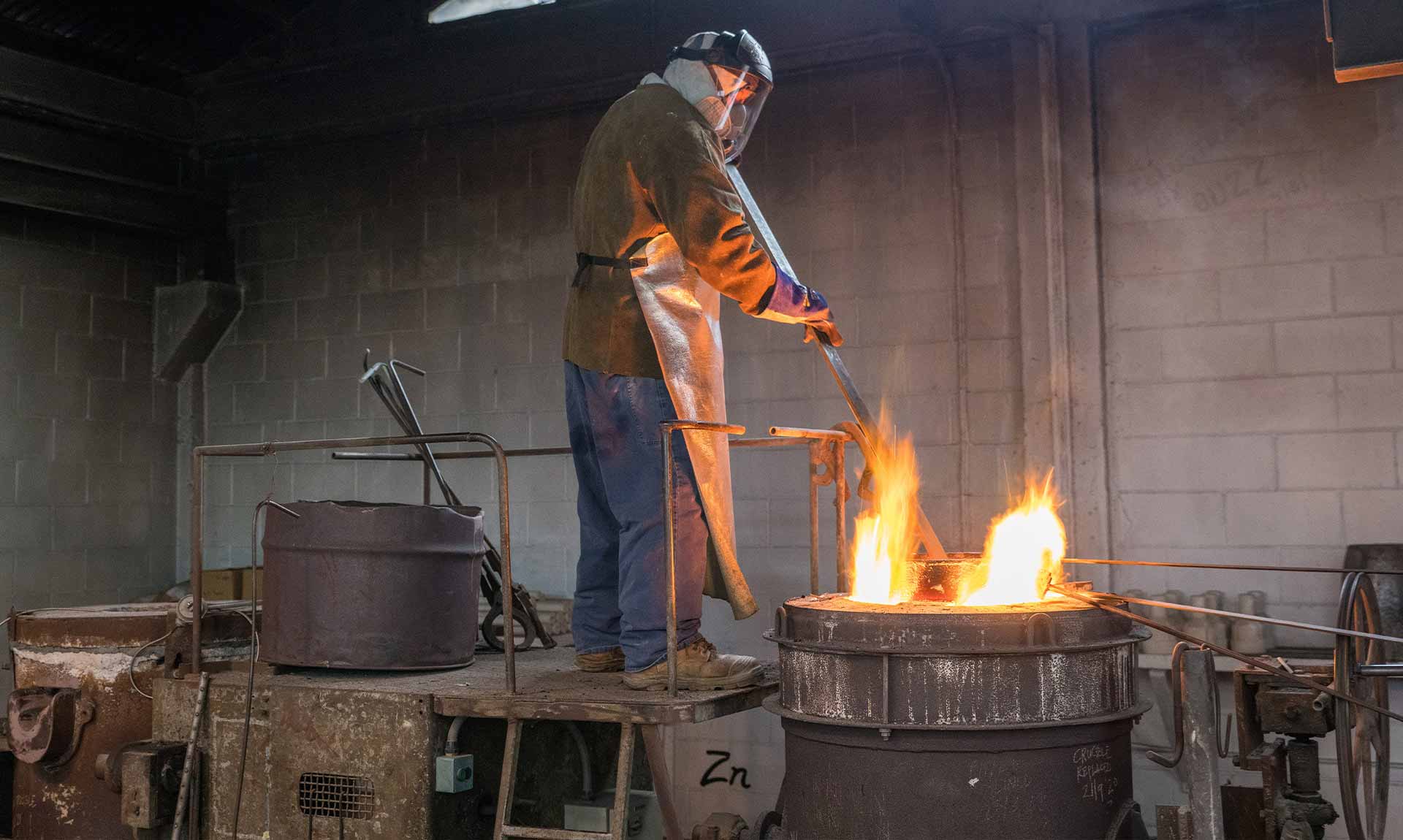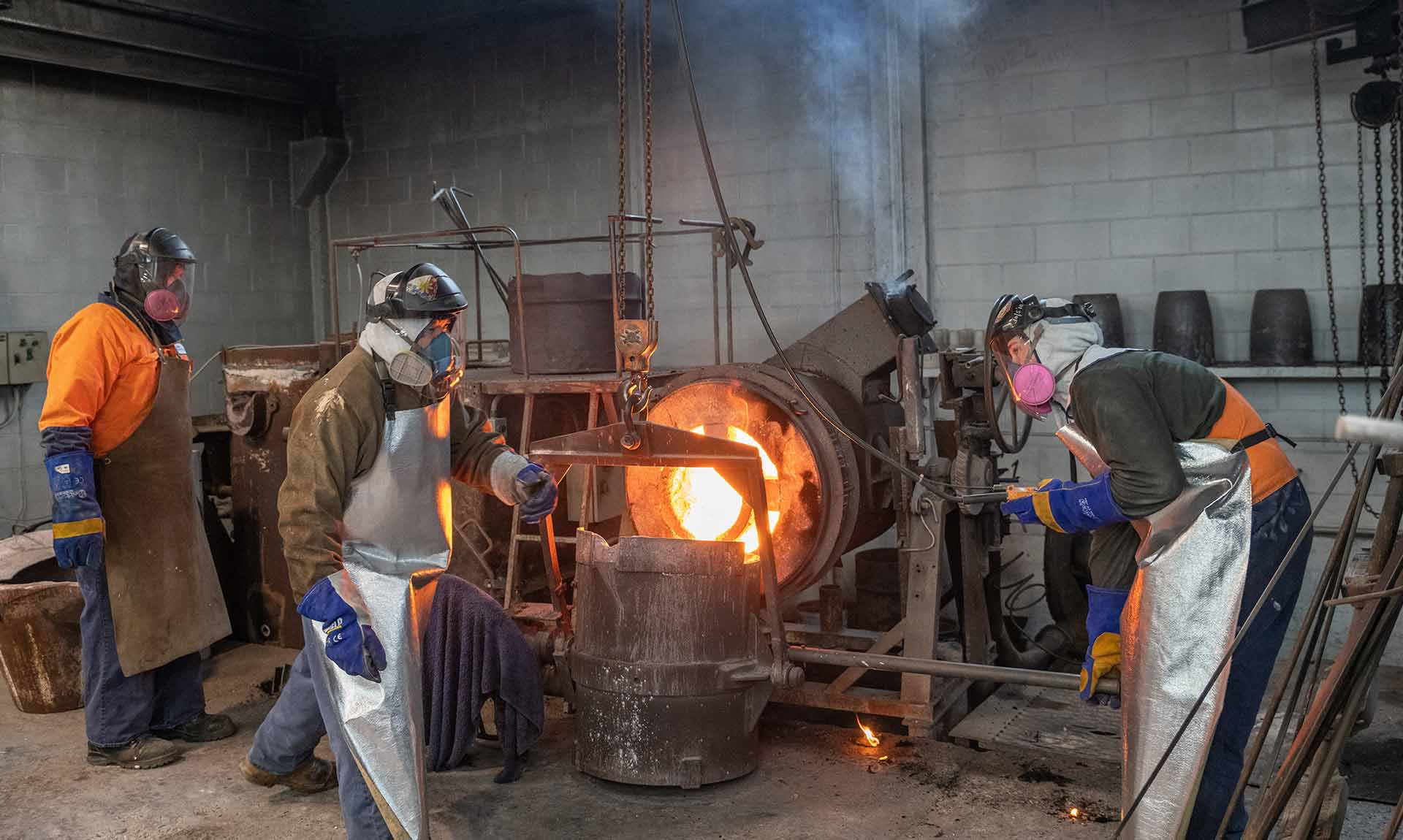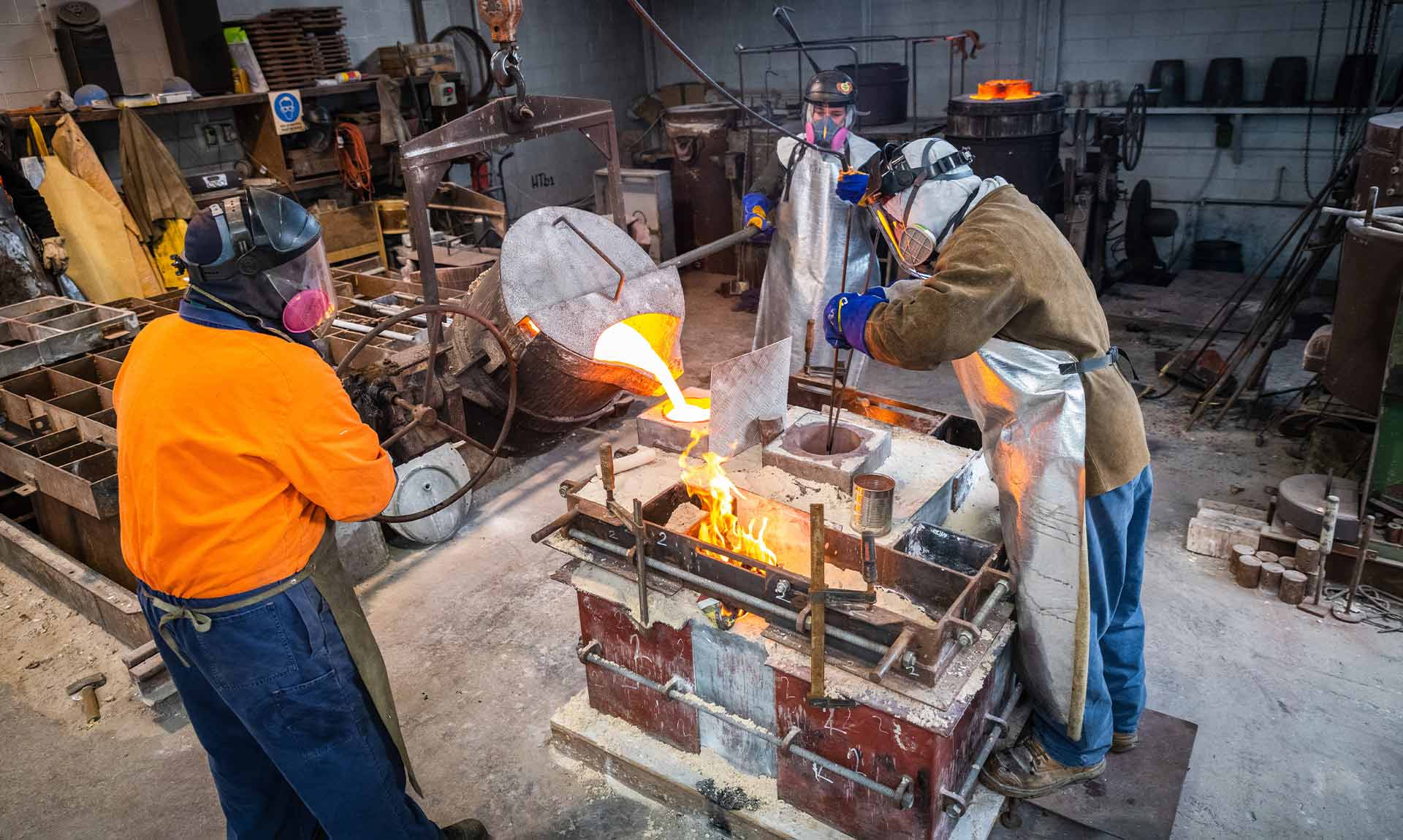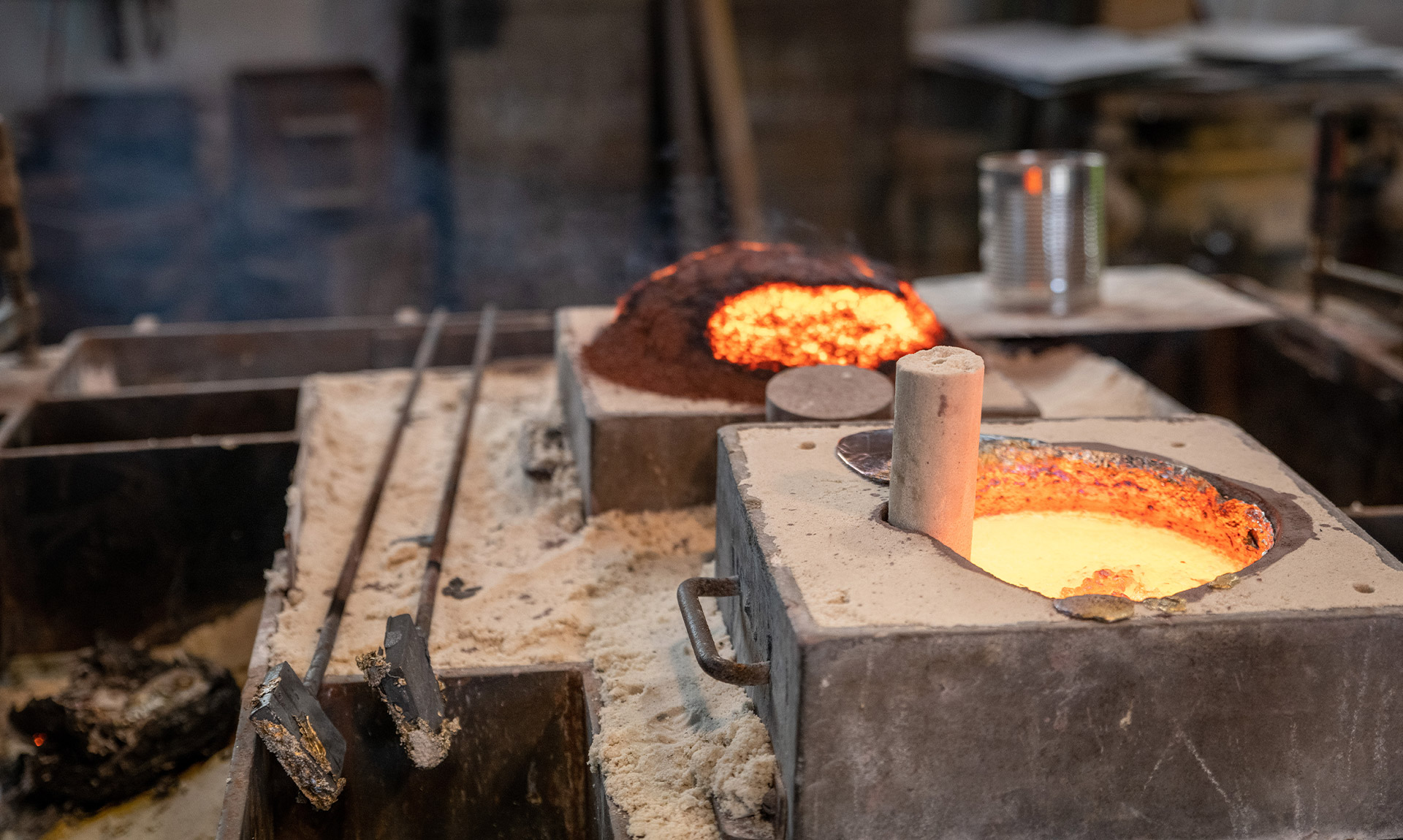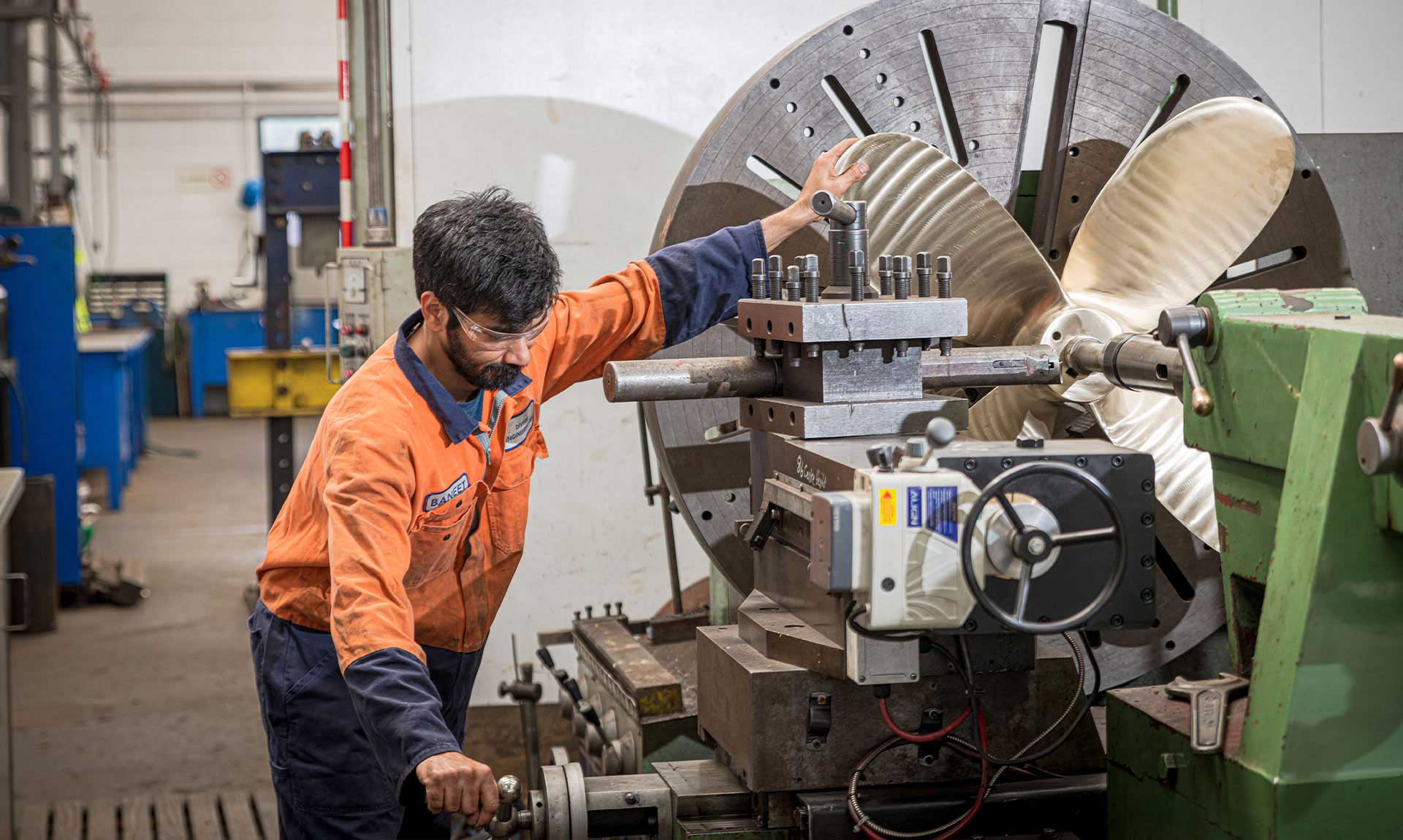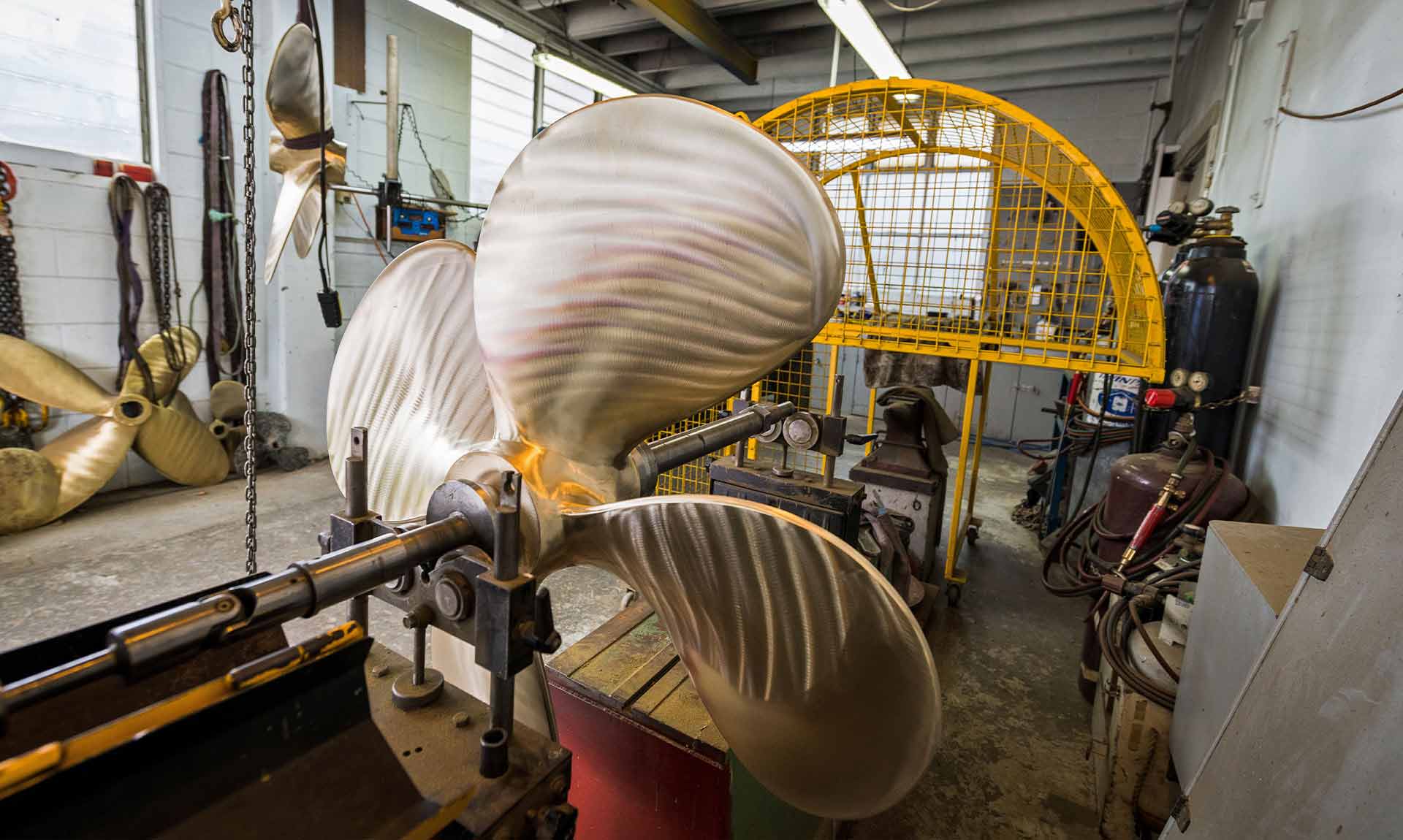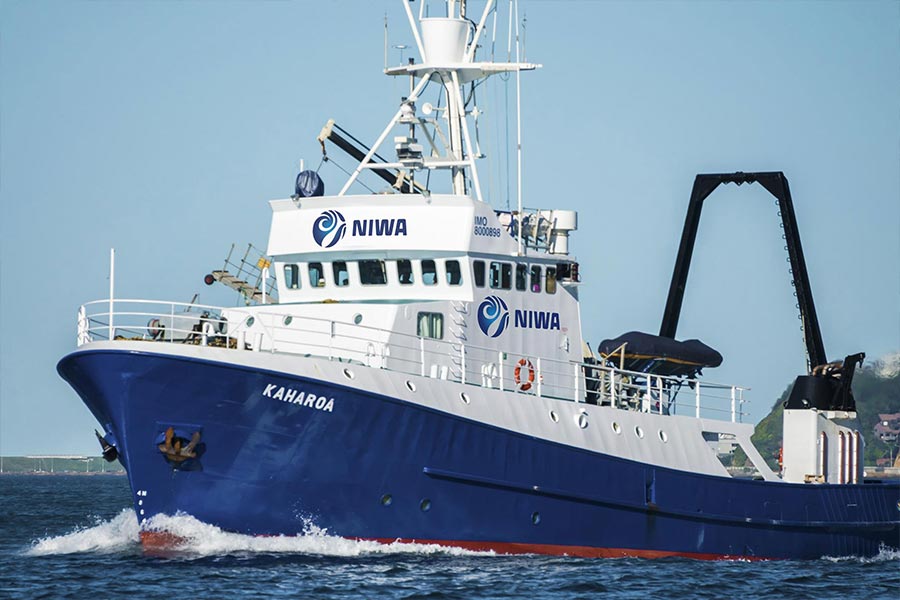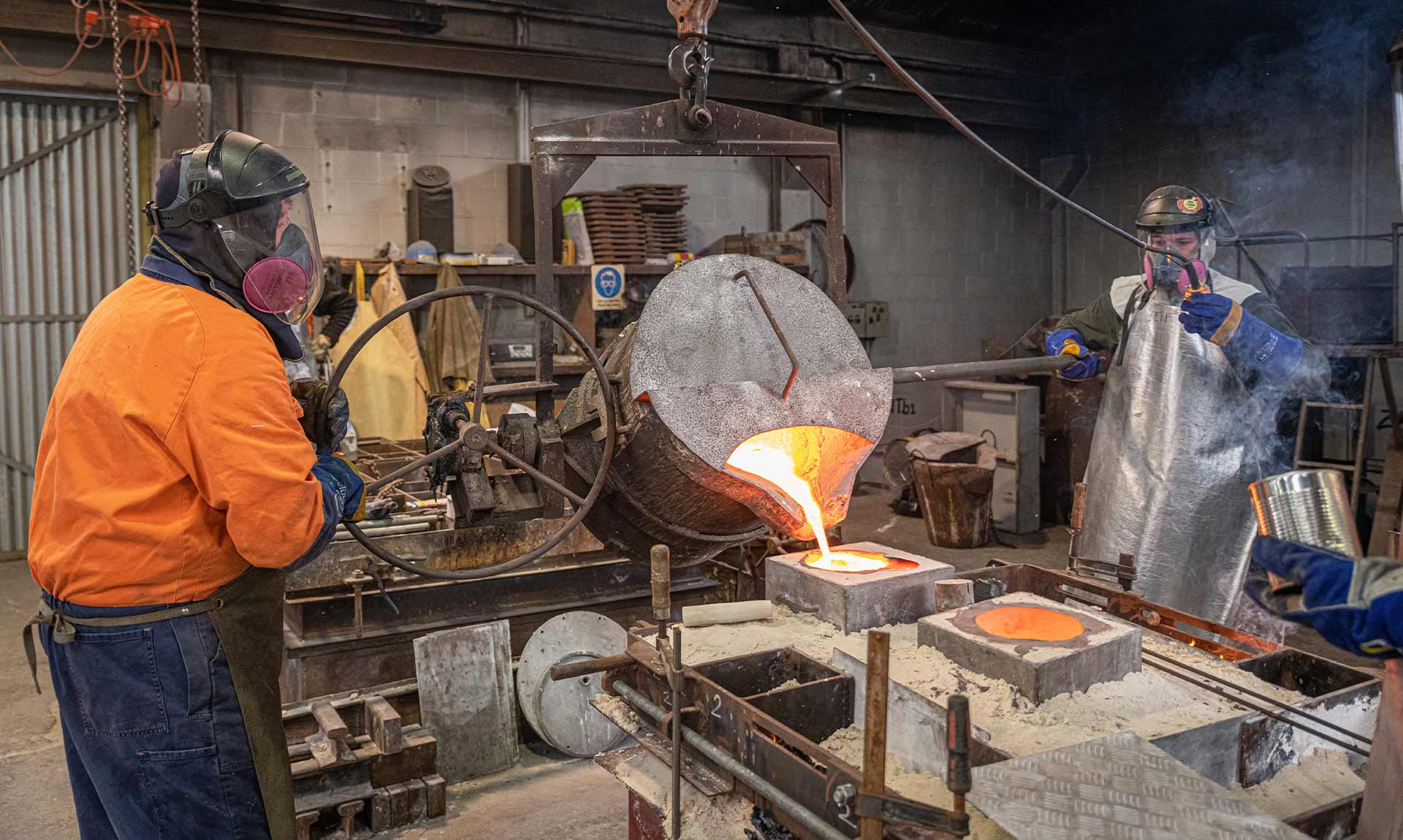How bronze propellers are made
One of only two such foundries in New Zealand, Diverse’s non-ferrous foundry and dedicated propeller machining facilitiy has the capability to produce complete propellers or individual blades of up to 1800mm diameter, with a weight of around 1.1 tons. Either the client will specify their own requirements, or Diverse can make a recommendation as to size and pitch, and whether a three, four or five-blade prop will suit the vessel best. A very large selection of blade templates is available, some dating back to the inception of N&B Propellers, Diverse’s forerunner.
A suitable template or ‘blank’ will be selected and, if required, altered by the firm’s shipwrights. This blank is then used to create a full shape of the required propeller in sand, to which a chemical is added causing it to set hard, within a casting box. Most propellers cast at Diverse are made of AB2, a nickel aluminium bronze widely used in marine applications, having high strength and good wear resistance. It’s heated up to around 1200 degrees Celcius at which point it becomes molten metal, ready to be poured.
At this stage of the process, a couple of traditions are used when pouring the bronze, such as burning a newspaper over the vent holes. While it’s a tradition whose origins may be very old, this serves an important purpose in creating a vacuum that pulls any impurities or air out of the system. After pouring, the new propeller is left for about 24 hours to cool down before being broken out of the mould.
From there, the prop is taken into the machine shop where the centre is bored out to the required taper and keyways are put in before it is ground and polished. This part of the process requires great precision, with the propeller exactly centred to ensure alignment of the final shape, and includes including hand polishing. The penultimate stage is checking the pitch – a computer-controlled process to ensure that all blades have identical pitch and that there is no reverse-pitch action.
Finally, the new propeller is spun on a balancing machine to determine whether weight needs to be added or removed to achieve a perfect balance. Depending on customer requirements, Prop Speed (a coating which reduces friction and maximises fuel efficiency and speed, while also acting as an anti-fouling agent) may then be applied as a finishing touch.
Diverse Propellers generally makes around 30 propellers a year. In addition to propellers, the foundry also casts a variety of other large items, ranging from statues and sculptures for local artists and the local Council, to one-off furniture parts and decorations, using supplied moulds.
